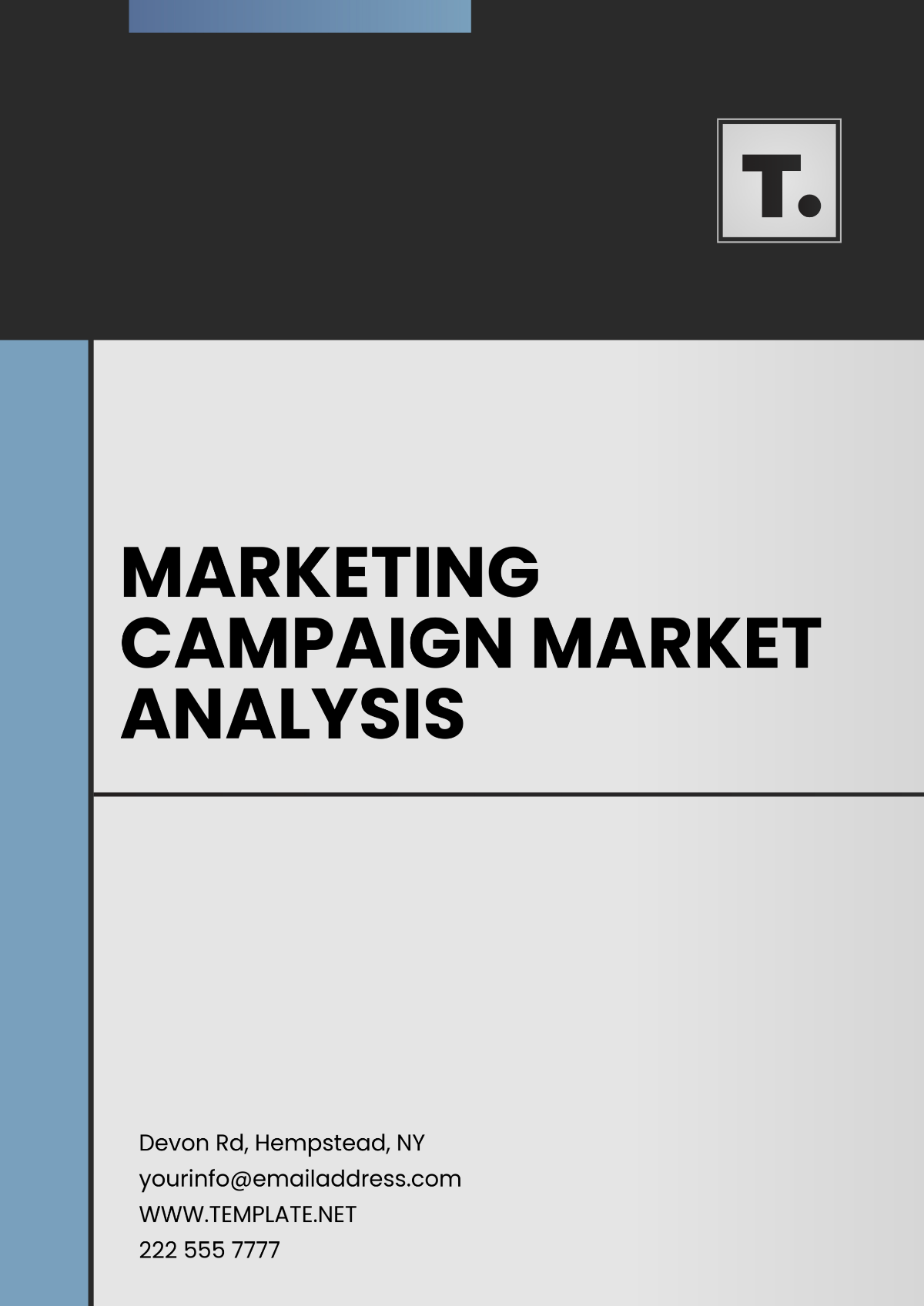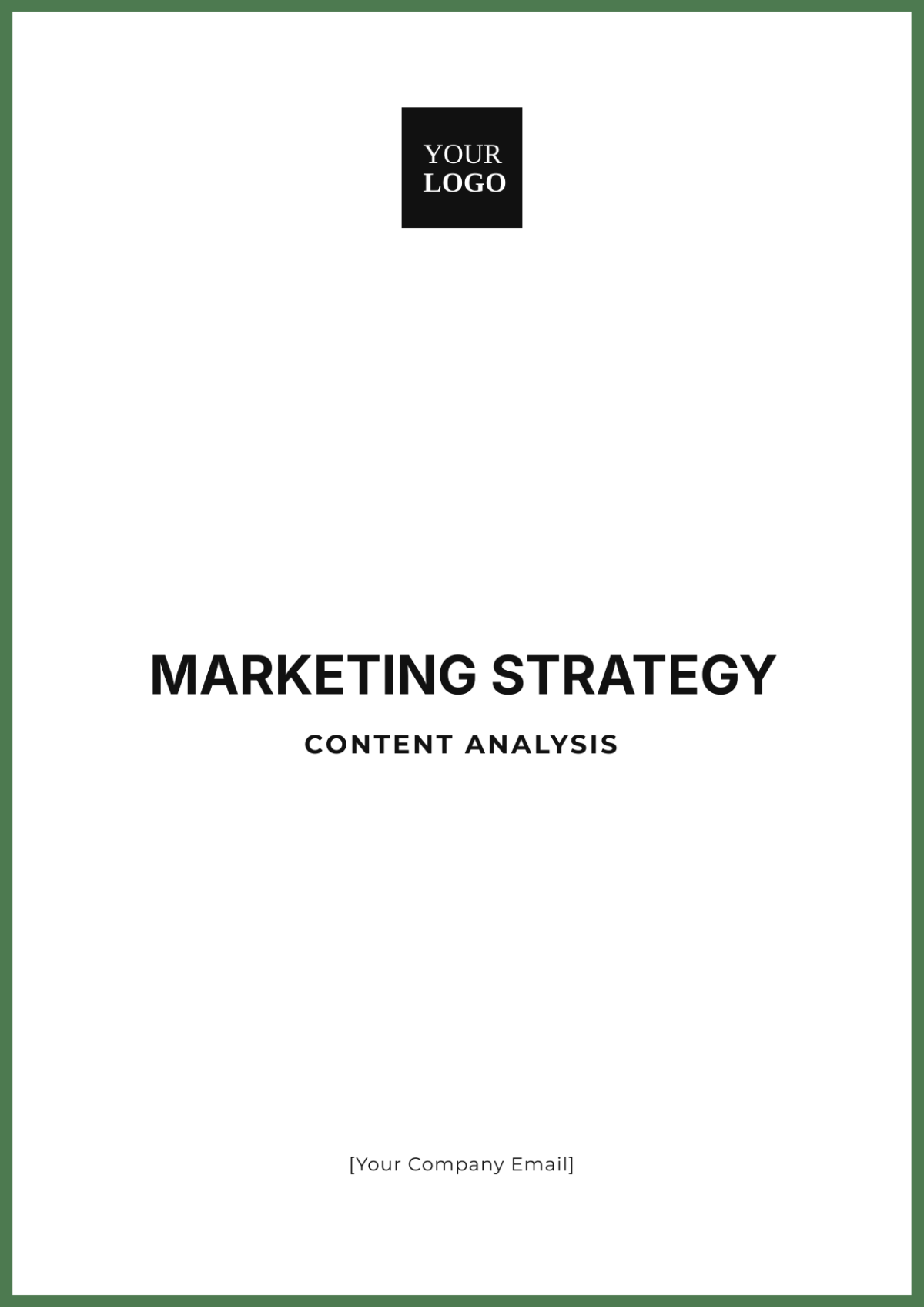Marketing Analysis Report
Prepared By : | [Your Name] |
Department : | [Your Department] |
Company Name : | [Your Company Name] |
Company Address: | [Your Company Address] |
Company Social Media: | [Your Company Social Media] |
I. Executive Summary
A. Overview
Purpose: Evaluating market conditions, identifying opportunities, and guiding strategic decisions for FutureTech Innovations.
Scope: This analysis focuses on the North American market for wearable health technology. It aims to understand market dynamics, identify growth opportunities, and provide strategic recommendations for the next five years (2050-2055).
B. Key Findings
The wearable health technology market is projected to grow at an annual rate of 10% from 2050 to 2055.
Increasing health awareness and advancements in AI-driven health diagnostics are key market drivers.
Competition is intensifying with major players like [Competitor 1 Name] and [Competitor 2 Name] dominating market share.
C. Recommendations
Invest in AI-driven personalized health features to differentiate our product line.
Expand distribution channels to include emerging markets in South American.
Strengthen partnerships with healthcare providers to integrate our technology into routine health checkups.
II. Market Overview
A. Market Size and Growth
The North American wearable health technology market was valued at $10 billion in 2049 and is expected to reach $16.5 billion by 2055.
Graph: Market Growth (2050-2055)
B. Market Segmentation
Segmentation Type | Description |
|---|---|
Demographic | Age: 18-35 (40%), 36-55 (35%), 56+ (25%) Gender: Male (45%), Female (55%) |
Geographic | USA (60%), Canada (25%), Mexico (15%) |
Behavioral | Fitness Enthusiasts, Health-Conscious Consumers, Chronic Disease Patients |
Psychographic | Tech-Savvy Users, Early Adopters, Health-Conscious Individuals |
C. Market Trends
Increasing demand for real-time health monitoring.
Growth in telemedicine and remote healthcare services.
Rising consumer preference for eco-friendly and sustainable products.
III. Target Audience Analysis
Audience Segment | Description |
|---|---|
Demographic | Age: Primarily adults aged 25-45 Gender: Slightly more focus on female consumers due to higher health engagement. Income Level: Middle to high-income individuals. Education Level: College-educated and above. |
Behavioral |
|
Psychographic |
|
Geographic | Primary Markets: Urban areas with high-tech adoption rates Secondary Markets: Suburban and rural areas with growing interest in health tech. |
IV. Competitive Analysis
A. Major Competitors
Competitor | Strengths | Weaknesses |
|---|---|---|
[Competitor 1 Name] | Advanced AI features, strong brand | Higher price point, limited battery life |
[Competitor 2 Name] | Comprehensive health metrics, healthcare partnerships | Less user-friendly interface, smaller market share in the USA |
B. Market Positioning
[Your Company Name] is positioned as a cost-effective, high-quality alternative to premium brands.
Showing [Your Company Name] against competitors based on price and quality.
C. SWOT Analysis
Strengths | Weaknesses | Opportunities | Threats |
|---|---|---|---|
Innovative AI technology | Limited brand awareness | Growing market for health wearables | Intense competition |
Strong R&D capabilities | Smaller distribution network | Potential partnerships with fitness and healthcare providers | Rapid technological changes |
V. Marketing Strategy
A. Marketing Goals
Short-term: Increase market share by 5% within one year (2050-2051).
Long-term: Become a top-three player in the North American market by 2055.
B. Target Market
Primary Target: Tech-savvy health-conscious individuals aged 25-45.
Secondary Target: Seniors with chronic health conditions.
C. Marketing Mix (4 Ps)
Product:
AI-powered wearable health devices with real-time monitoring.
Features include heart rate monitoring, sleep analysis, and personalized health insights.
Price:
Competitive pricing strategy to attract cost-conscious consumers.
Bundle offers and subscription plans for additional services.
Place:
Online store, major e-commerce platforms, and selected retail partners.
Expanding presence in fitness centers and healthcare facilities.
Promotion:
Digital marketing campaigns, social media engagement, and influencer partnerships.
Health workshops, webinars, and demo sessions in collaboration with healthcare providers.
D. Budget and Resources
Annual Marketing Budget: $5 million.
Resources Required: Marketing team, digital tools, partnerships with influencers, and healthcare providers.
Marketing Activity | Budget Allocation (in Million USD) | Expected Outcome |
|---|---|---|
Digital Marketing | 1.5 | Increased online presence and sales |
Social Media Campaigns | 1.0 | Higher engagement and brand awareness |
Influencer Partnerships | 0.5 | Access to new customer segments |
Health Workshops | 1.0 | Enhanced brand credibility and customer trust |
Webinars and Demos | 1.0 | Direct customer interaction and feedback |
VI. Recommendations
A. Strategic Recommendations
Enhance AI capabilities to offer unique health insights.
Expand marketing efforts to increase brand awareness.
Develop strategic partnerships with healthcare and fitness organizations.
B. Implementation Plan
Implementation Phase | Timeline | Key Actions | Responsible Team |
|---|---|---|---|
Q3 2050 | July-Sep | Launch an AI-focused marketing campaign | Marketing, R&D |
Q4 2050 | Oct-Dec | Establish healthcare provider partnerships | Business Development |
Q1 2051 | Jan-Mar | Expand distribution channels to South America | Sales, Logistics |
C. Performance Metrics
Sales Growth: Target a 10% increase in sales by the end of 2051.
Market Share: Aim to capture 5% additional market share by 2052.
Customer Satisfaction: Achieve a customer satisfaction score of 90% or higher.
VII. Appendices
A. Data Sources
Market research reports from 2050.
Consumer surveys conducted in Q1 2050.
Industry publications and academic journals.
B. Glossary of Terms
AI (Artificial Intelligence): Technology enabling machines to mimic human intelligence.
Wearable Technology: Electronic devices worn on the body that monitor and analyze health data.
C. References
"North American Wearable Tech Market Report," TechInsights, 2050.
"Consumer Health Trends," HealthTech Journal, 2050.

















































